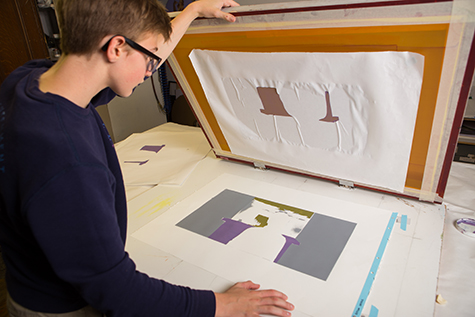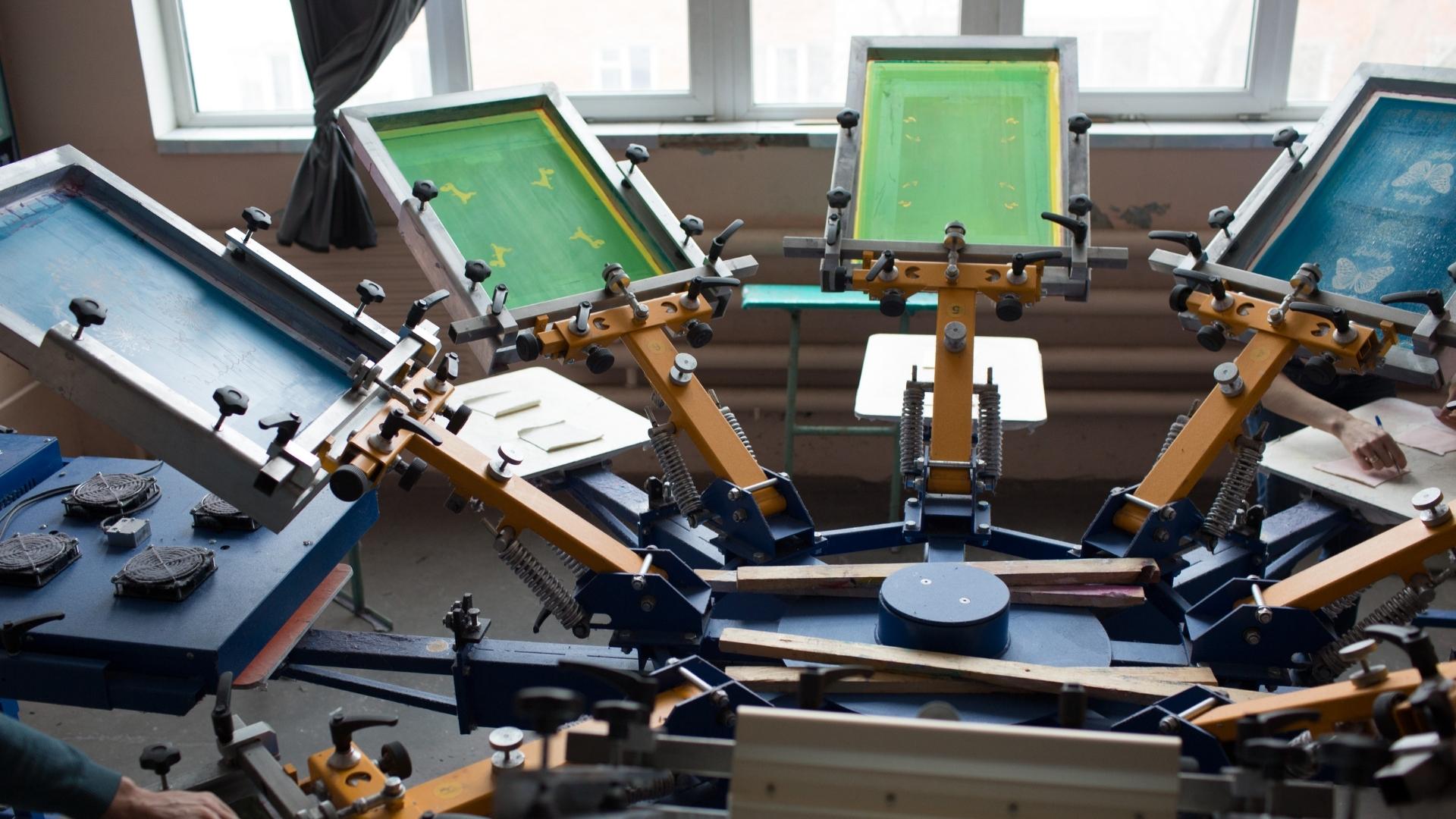ChatGPT said: How 10:9 Design Screen Printing can elevate your event presence
Wiki Article
The Essential Guide to Understanding Screen Printing and Its Versatile Uses
Screen printing has an abundant history that dates back to old times, progressing into an advanced technique made use of across numerous markets today. This overview checks out the complexities of the screen printing procedure, outlining its applications in advertising and marketing, fashion, and home decoration - 10:9 Design Texas. Recognizing these fundamentals can open up creative capacity for both business and imaginative projects. The complying with areas will certainly disclose essential ideas and strategies to boost one's screen printing venturesThe Background of Screen Printing
Although screen printing has roots that map back centuries, its evolution shows the artistic and technical developments of different cultures. Coming from old China, the strategy was originally utilized for embellishing textiles and later spread to Japan, where it came to be integral to Ukiyo-e woodblock printing. The approach changed to Europe in the 18th century, where it got appeal amongst artisans and commercial printers. The invention of photo solution in the 20th century revolutionized screen printing, enabling for even more complex styles and greater performance. Artists like Andy Warhol further drove its popularity, using the medium to develop iconic works that blended commercialism and art. By the late 20th century, screen printing had developed itself as a functional method, used in style, advertising, and fine art. Today, it remains to advance, integrating digital innovation and broadening its applications across numerous sectors.The Screen Printing Refine Explained
Screen printing changes artistic visions right into tangible designs via a series of specific steps. An image is produced and then transferred onto a screen, typically made of great mesh material stretched over a structure. A light-sensitive solution is used to the screen, which is revealed to light, setting in locations not covered by the image. After rinsing the unhardened solution, a pattern is formed.Next, the screen is positioned over the substrate, whether it be textile, paper, or another material. Ink is then pushed with the open locations of the pattern using a squeegee, transferring the design onto the substratum below. This procedure can be repeated for several colors, calling for separate screens for each shade. Finally, the published product is treated making use of heat to assure the ink sticks appropriately, leading to a long lasting, vivid design on-line.
Kinds Of Screen Printing Techniques
.png)
In addition, specialized strategies, such as discharge screen printing, remove color from the textile to develop softer prints, while aluminum foil screen printing uses metal aluminum foil to achieve a glossy coating (10:9 Design contact). Each technique offers unique attributes, providing to various innovative demands and manufacturing ranges, eventually expanding the opportunities within the screen printing domain name
Applications of Screen Printing in Numerous Industries

Furthermore, the signage and advertising sectors utilize screen printing for producing eye-catching display screens and banners. This method permits strong colors and detailed styles that capture interest. In electronics, screen printing is utilized for using conductive inks to circuit card, necessary for element connections. In addition, the home decoration market welcomes screen printing to produce distinct designs on textiles and wall art. On the whole, screen printing functions as an essential device throughout varied areas, boosting products with personalized and visually appealing graphics.
Tips for Successful Screen Printing Projects
While undertaking a screen printing project, mindful attention to detail can considerably improve the last result. Initially, picking premium materials is essential; this includes the screen, inks, and substrates. Using proper mesh matters can impact ink deposition and information resolution. Preparation is similarly crucial; complete cleansing of screens and proper direct exposure times ensure crisp prints.Next, accurate registration is important for multi-color prints. Making use of alignment tools can help accomplish exact layering. Additionally, screening prints on scrap products before production helps identify prospective issues without squandering resources.

Regularly Asked Questions
What Products Are Best for Screen Printing on Material?
Cotton and polyester blends are ideal for screen printing on fabric due to their longevity and ink absorption. Additionally, specialty textiles like silk or canvas can create distinct appearances and surfaces, boosting the general layout quality.How Do I Clean and Maintain Screen Printing Tools?
To preserve and clean up screen printing devices, one ought to consistently wash screens with proper solvents, check squeegees for wear, lube relocating parts, and shop all products in a dry, dust-free atmosphere to lengthen their life-span.What Are the Ecological Influences of Screen Printing?
Screen printing can have significant environmental influences, including chemical waste from inks and solvents, water usage throughout cleansing processes, and power consumption. Environment-friendly materials and lasting methods are crucial for minimizing these unfavorable effects.Can Screen Printing Be Done at Home Effectively?
Screen printing can be effectively done at home with the ideal materials and methods. Enthusiasts can create quality prints, though success depends on their ability level, devices, and understanding of the process entailed.
What Are the Prices Linked With Starting a Display Printing Company?

Starting a screen printing organization includes expenses for devices, materials, and work space. Preliminary costs commonly vary from a few hundred to a number of thousand dollars, depending upon the scale, high quality of equipment, and preferred production capacity.
Screen printing has an abundant background that dates back to old times, advancing into a sophisticated method used across different markets today. An additional method, rotary screen printing, employs cylindrical displays, promoting continuous printing on textile rolls, thereby enhancing efficiency for large-scale manufacturings. Additionally, specialized strategies, such as discharge screen printing, get rid of dye from the material to develop softer prints, while foil screen printing applies metal foil to achieve a shiny coating. In the style market, screen printing is widely used to produce vivid styles on apparel, enabling brands to display their distinct designs. Cotton and polyester blends are optimal for screen printing on material due to their resilience and ink absorption.
Report this wiki page